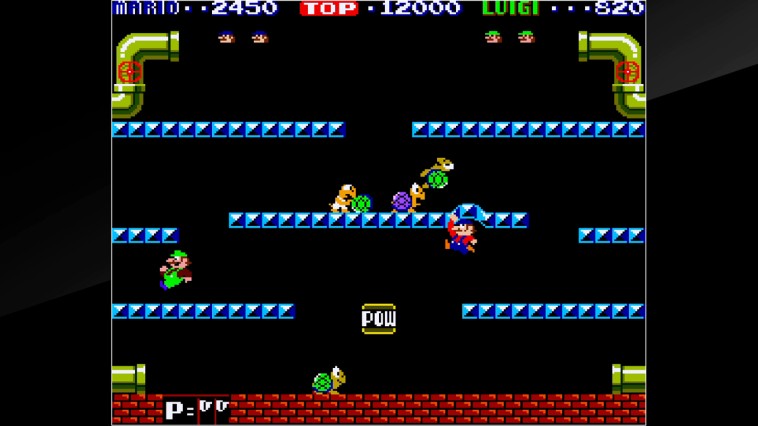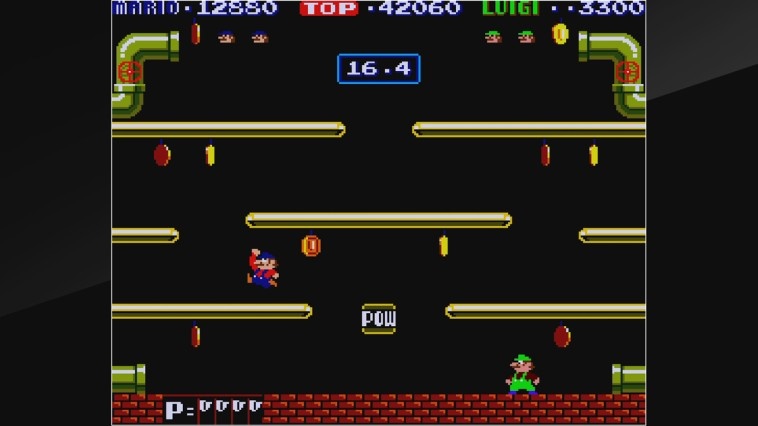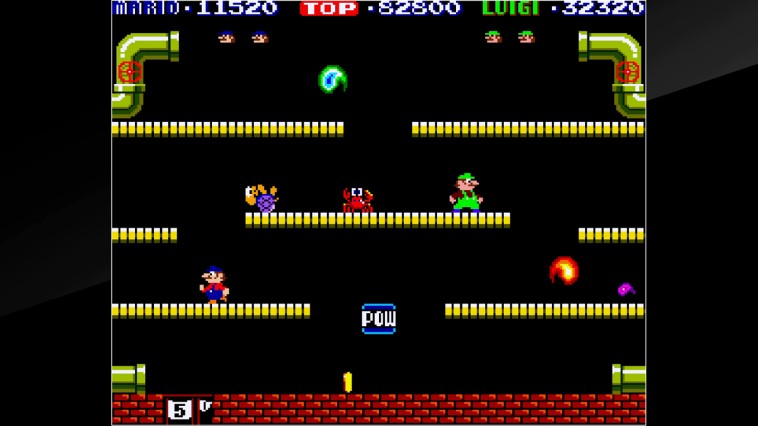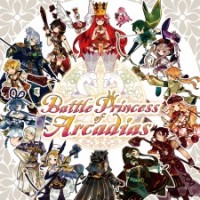
I think everyone was pretty excited when Nintendo announced that they would be doing a series of Arcade Archives, which would bring their original arcade titles to a new console. After all, there’s been plenty of porting for their console classics (though Switch users are impatiently waiting for an official word on full Virtual Console). But the games of the 70s and 80s, which paved the way for the empire we know today, are largely unknown to the last two generation of gamers. And what better place to start the journey of history than with the first independent game of the famous Mario Bros? And, while the game may not necessarily hold up as well as it did back in the bowling alleys and burger joints where it debuted, it’s still a pretty decent title overall.
There isn’t a backstory to know or to understand for the original Mario Bros. You’re a plumber in a sewer and bad things are coming out of pipes – crabs, turtles, the usual. You can’t hurt them when they’re walking around, so you need to hit them from below, knock them over and then kick them off the screen before they right themselves. Kick out all the baddies to clear the stage. If you’re not fast enough, not only do the bad guys get back on their feet, but they also run faster and seem more aggressive. Oh, and fireballs will occasionally appear, but they’ll specifically start coming after you if you’re taking too long. Remember, Nintendo wanted your quarters, and they can’t have you spending all day on a single coin.
One of the most important preservations of the Arcade Archives are the graphical assets. There have been a lot of ways to legitimately play the original version of Mario Bros: not only was there an NES release, but several incarnations of Super Mario Bros also had the arcade version baked in as an extra little feature if you wanted to give it a go. The issue is, most of these renditions were the core concept with newer graphics used to give that “old but new” feel to the experience. With the Archives, this is a straight, brutal representation of how the game looked at the time, albeit on a better quality screen than was available. Mario has richer colors to his sprite, a deeper blue and red than what the NES generation may have remembered. The turtles, called “shellcreepers,” are actually pretty gnarly with hooked bills that feel less like turtles and more like parrot beaks crammed onto a tiny head. The crabs are even sharper looking, more menacing, which gives a totally different vibe to the game.

The throwback to the game, though, also means a throwback to the controls. Mario Bros wasn’t exactly complex: run and jump, that’s all. But the way controls flow together nowadays will cause some serious frustration for players unfamiliar to the illogical way arcades worked (at least compared to today). Mario is able to jump while running, but you can’t make his jump start to arc if you’re already in the process of upward mobility. It feels like Mario is constantly taking a couple extra steps, but that’s because input lag is authentic to how the joysticks responded and reacted in classic cabinets. The overall effect is “sticky,” forcing players to rethink how they would control Mario. Back in the day, this wasn’t a problem, as their only other encounter may have been in the Donkey Kong game and, let’s be honest, Mario was the antagonist there and unplayable. But, for people who’ve grown up with Mario, they may feel almost betrayed by how the plucky Italian works.
Additionally, Mario Bros. does still exercise the arcade level of difficulty, where the purpose was to achieve a high score, not experience an epic storyline. While the first couple of waves of enemies are bearable, it rapidly gets very crowded on the screen, or at least as crowded as it can be with a limited number of draws and RAM to support everything. I was fascinated to learn, for the first time, it’s possible to take care of incoming fireballs the same way as the enemies, by hitting them with ground from below. But that didn’t make it easier when I had three pissed off shellcreepers raining hell down on me in a relatively short amount of time, not to mention trying to work together with Luigi, played by one of my coworkers, who, surprise, never played the arcade version and was therefore terrible. And when the final enemy left got a speed boost and an anger injection, it became a matter of just not getting hit in order to survive. When you finally put your initials on that high score screen, it is damn satisfying, even if nerve wracking.
Lastly, holy crap, the sound. Super Mario Bros. is known for it’s iconic theme song and variations of tunes that anyone born in the last three decades probably can hum without hesitation. Mario Bros, our arcade masterpiece, has almost no music to speak off, save for a couple of buzzes of music at the beginning and end of your game (you hear a sped up, chippy intro to Mozart’s Pequena Serenata Nocturna during the introduction). The sound effects are limited to the buzz of monsters, the chirp of being killed, and the clink of coins, plus a rather droopy jump noise. But the way the sound is emulated isn’t clean or crisp at all. Rather, it’s muted and kind of muffled, like you would expect an overworked speaker to produce in a game center that’s overrun with competing noise. For all extensive purposes, this was the most impressive part to me, and I really appreciate Nintendo not taking the time to try and make it sharper. This is how it was meant to be heard.

As the emulation of Mario Bros. has been headed by Hamster (who’ve done the past few SNK titles), you also get the now infamous Caravan and High Score modes. These leaderboards, as you can imagine, are filling up fast, much faster than I’ve seen on most of the NEO GEO titles. But Hamster didn’t include the option for the Japanese version of the game, which I found a bit surprising. I’m not saying there would have been some grand change in the game, but there wasn’t that much difference for many of the other Japanese NEO GEO games either. It would have been novel to have, so that people could have at least taken a glimpse of what it played like. Then again, classic arcades are still big in Japan, with places like Super Potato proudly boasting game rooms with nothing but throwback game tables. So Japan may be less inclined to anger retro clientele by offering cheap, accessible gaming without needing to immerse yourself in dank atmosphere and secondhand smoke.
This is a fine place for the Arcade Archives to begin. Nintendo decided to lead with a title that, while not their biggest arcade success, is still the most recognizable and iconic. With less than four weeks till the launch of Mario Odyssey, arguably the most anticipated Mario game in years, drumming up any kind of additional recognizability and connection to fans is essential. Hooking old fans back in and getting them hyped is totally supported, though Arcade Archives Mario Bros. could have used a bit more meat to it, such as some shots of the original cabinet to view in a separate menu. And I can’t imagine folks dropping to buy a new Nintendo Switch (if they can even find one) just to play this game. But, for current Switch owners and Nintendo diehards, this will make a fine addition to anyone’s collection.

REVIEW CODE: A complimentary Nintendo Switch code was provided to Bonus Stage for this review. Please send all review code enquiries to press@4gn.co.uk.
Subscribe to our mailing list
Get the latest game reviews, news, features, and more straight to your inbox
Thank you for subscribing to Bonus Stage.
Something went wrong.
-
Gameplay - /10
0/10
-
Graphics - /10
0/10
-
Sound - /10
0/10
-
Replay Value - /10
0/10





